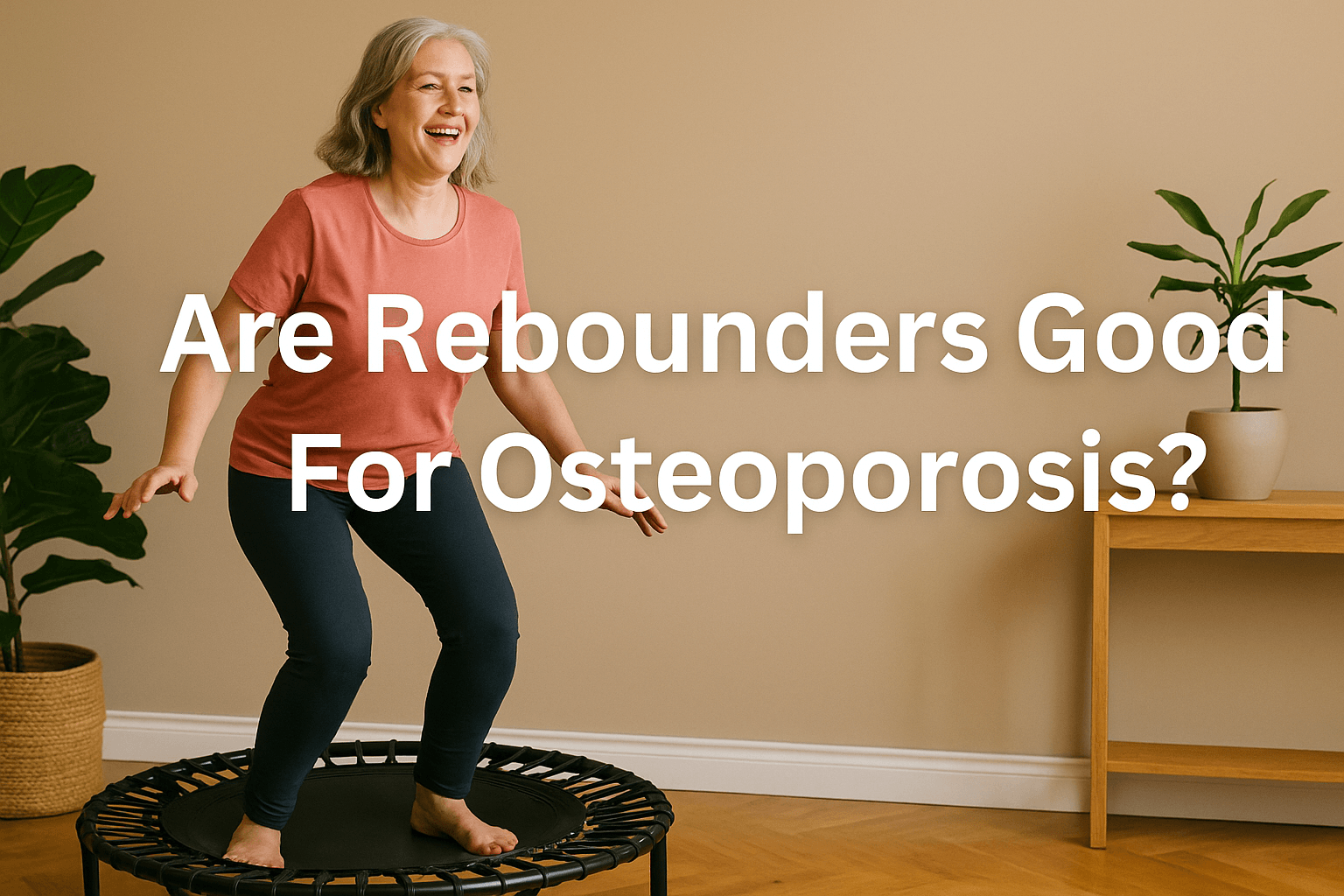
Are Rebounders Good For Osteoporosis?
Rebounder trampoline benefits aren’t just about fun — they can be a safe, joint-friendly way to stay active, improve cardiovascular health, and enhance coordination.
But what about osteoporosis? The short answer: there’s no medical evidence that rebounding prevents or treats osteoporosis. However, rebounding can still complement a healthy lifestyle when paired with exercises that are medically recommended for bone strength.
Rebounding and Osteoporosis: A Low-Impact Solution
What the Guidelines Say
According to the NHS prevention guidance:
-
Adults (19–64) should do at least 2 hours and 30 minutes of moderate-intensity aerobic activity weekly (e.g., brisk walking or cycling) plus muscle-strengthening activities on 2 or more days per week, targeting major muscle groups nhs.uk.
-
For adults over 65, 150 minutes of moderate activity weekly is advised, along with strength training twice a week and balance/flexibility work to reduce fall risk nhs.uk.
Building on this, the UK Strong-Steady-Straight consensus (a multidisciplinary expert recommendation) specifically for people with osteoporosis includes PMC:
-
Muscle-strengthening (resistance) exercise — 2 to 3 days per week; progressive resistance training with major muscle groups.
-
Impact (weight-bearing) exercise — for those without vertebral fractures: about 50 moderate impacts per session on most days (e.g., low-level hops, jogging, stamping); for those with vertebral fractures or high fracture risk: limit to brisk walking-level impact — about 20 minutes per day.
-
Strength and balance training — at least twice weekly to reduce falls and improve stability.
-
Spinal extension exercises — to improve posture and potentially reduce vertebral fracture risk.
These recommendations are grounded in clinical evidence and expert consensus for promoting bone strength and reducing fractures and falls PMC.

Where Rebounding Fits In
Rebounding hasn’t been shown to build bone strength or prevent osteoporosis—but it can be a valuable addition to an active routine because it’s:
-
A low-impact cardio alternative, gentler on joints than running.
-
A fun way to protect joints while still staying active.
-
Potentially helpful for improving coordination, balance, and consistency in exercise habits.
However, it's not a substitute for the evidence-based exercises outlined above.

Staying Active With Rebounding
Recommended Exercises and Techniques
Gentle Bouncing and Stability Options
You don’t need high jumps to get benefits. Light bouncing or pushing gently through your feet can be sufficient. A rebounder with a support bar provides added stability if you're concerned about balance.
Consistency Over Intensity
Short, regular sessions are better than sporadic, intense bursts. The key is to be consistent.
Talking to Your Doctor
If you have osteoporosis or are at risk (especially with fractures), consult your doctor or physiotherapist. They can help tailor a safe, effective mix of:
-
Progressive resistance training,
-
Appropriate impact exercises,
-
Balance and posture work,
-
Avoiding risky movements like deep flexion or abrupt twisting.

Final Thoughts
Rebounding isn’t medically recommended for preventing or treating osteoporosis, but it can be a safe, enjoyable, low-impact way to stay active and maintain exercise consistency. For optimal bone health, follow evidence-backed strategies: resistance training, weight-bearing impact (as appropriate), balance exercises, and posture-focused routines.
Pairing rebounding with these shifts can help you stay motivated—and that long-term consistency is half the battle!
Disclaimer: This article is for informational purposes only, not medical advice. Always consult a qualified healthcare professional before starting a new exercise programme.
Have you checked out our other posts?
Are Rebounders Good For Seniors?
Are Rebounders Good For Weight Loss?
Are Rebounders Good For Knees?
Are Rebounders Good For Bone Density?
Are Rebounders A Good Workout?



Leave a comment